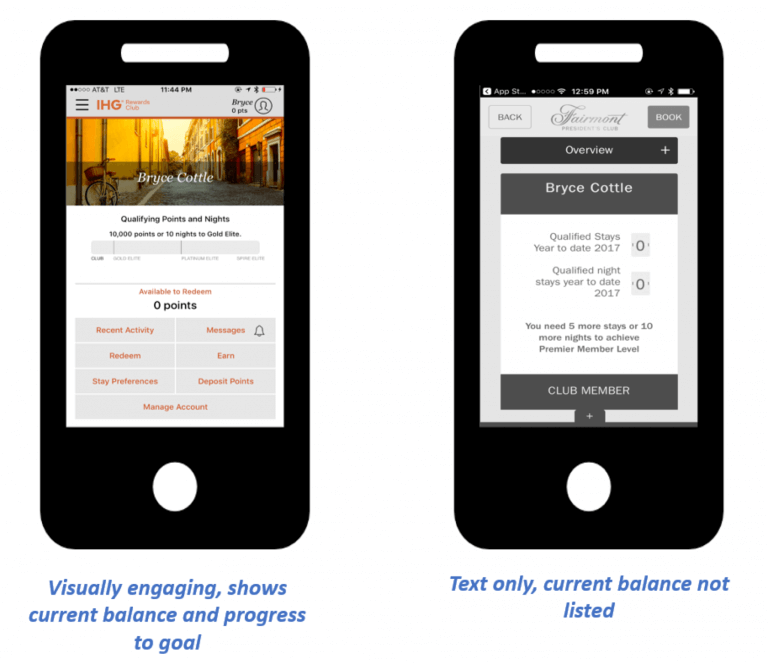
Lessons in Loyalty
While conducting research for this blog, it was surprising to find that the majority of what has been written about loyalty programs revolves around how they can be most effectively implemented to drive sales and retention. This makes sense from the perspective that loyalty programs are, at their core, focused on driving revenue, but the lack of attention to how these programs can impact the customer experience is astonishing.
A recent study on retail brands found that 79% of respondents left a brand due to a poor customer experience.1 That’s why it’s important to keep sight of the potential negative impact that a loyalty program may have on the customer experience. Establishing a program to drive retention and sales that may actually be driving customers away defeats the purpose of having a loyalty program in the first place! A good starting point when considering the customer experience is the effort required of the customer to interact with a brand. For loyalty programs, this takes the form of earning and utilizing the benefits.
Consider the following three recommendations to establish and monitor an easy-to-use (and easy-to-understand) loyalty program that not only drives sales and retention but also protects the customer experience:
1. Keep it simple and clear
According to the Harvard Business Review, reducing customer effort is an important part of building loyalty,2 and Alorica recently expanded on this in our essential to create a rewards program that is easy to understand and use. To do this, keep these points in mind:
Simple points system
The most common loyalty program methodology is a system where frequent members earn points that translate into some type of reward, and members work toward a certain amount of points to redeem their reward. The key here is to ensure that the relationship between points and tangible rewards is not complex and confusing.
One way to maintain clarity is to have a system in which every dollar spent equals a set amount of points, the easiest being a 1:1 ratio. However, this system typically works best for businesses that encourage frequent short-term purchases.3
Set a clear goal, and make it easy to see progress
To prevent customer confusion around a loyalty program, customers must look forward to a clear-cut goal with a finish line (or multiple finish lines) to cross or else they’ll lose interest.4
A major US hotel chain recently experienced high contact volume of customers who were unsure of their rewards point balance, and wanted to understand the current balance and progress toward their goal. Providing customers with clear and easily accessible methods to discover this information is paramount to reducing customer effort.
A recent JD & Associates study found that IHG Rewards and Fairmont President’s Club were at opposite ends of the spectrum in terms of customer satisfaction with their respective rewards programs.5 Looking at their mobile apps and how points progress is displayed on each may help explain why Hilton is a leader while Fairmont lags behind.

2. Monitor and control
An excellent indicator that your loyalty program requires too much effort is when customers are not using it! A program to continuously monitor engagement on your loyalty program not only facilitates retention but can also help ascertain whether your customers feel that the program is too obtuse.
Redemption rate (total points redeemed on rewards/total points issued to customers) is one way to measure customer engagement; industry-leading loyalty programs boast a redemption rate of 20%, and the average program sees 14% of points turned into a reward.6 If a redemption rate falls below 14%, it may be time to review customer feedback to determine opportunities for improvement.
Gathering customer feedback on your loyalty program is the second component of monitoring and controlling your loyalty program. Instead of waiting until there is a problem to seek feedback from program members, gather info continuously to ensure that the organization has a finger on the pulse of the customer. This data be used when redemption rate dips and also allows an organization to be proactive in reducing effort.
3. Use data for continuous improvement
Loyalty programs generate countless data points on consumer habits, such as average transaction amount, most frequently purchased items, and much more.7 This data, combined with customer contact history, provides organizations with the ammunition needed to proactively prevent future contacts on purchases. If a customer purchased a product and experienced an issue, chances are that they may experience a similar issue with a similar product. Smart businesses will use this data in concert to push proactive content to customers to reduce the likelihood of a future contact.
Pretty simple, right? Create a program that is easy to understand and use, measure its effectiveness, and use the data available to continuously improve your customers’ experience. Seem daunting? If so, we’re here to help!
At Alorica, we are insanely passionate about creating effortless customer experiences, and we would be happy to partner with you to unearth opportunities that drive customer retention while maintaining an amazing customer experience. Learn more about our Customer Experience Management Solutions today.
SOURCES
- COPC CXMP Industry Insights: Retail, Vol. 2, May 2017
- “Stop Trying to Delight Your Customers”, Aug 2010. Matthew Dixon, Karen Freeman, Nicholas Toman. https://hbr.org/2010/07/stop-trying-to-delight-your-customers
- “Customer Loyalty: The Ultimate Guide”, Sept 2017, Sophia Bernazzani. https://blog.smile.io/need-to-do-with-loyalty-in-2017/
- “How to Create Customer Loyalty Programs that Stick”, GREGORY CIOTTI, JULY 2016. https://www.helpscout.net/blog/customer-loyalty-programs/
- JD Power Hotel Guest Rewards/Loyalty Program Satisfaction Study (2017); https://www.jdpower.com/business/press-releases/jd-power-2017-hotel-loyalty-program-satisfaction-study
- Loyalty Best Practices for a Successful 2017”, ALEX MCEACHERN, Dec 2017. https://blog.smile.io/need-to-do-with-loyalty-in-2017/
- “3 Best Practices to Remember for Your Next Customer Loyalty Program”, Shannen Laur, Aug 2016. http://www.pr2020.com/blog/3-best-practices-to-remember-for-your-next-customer-loyalty-program
Get the Report
By clicking below, you consent to us contacting you directly, and to the collection, storage, and use of your personal information as more fully described in our privacy policy.
